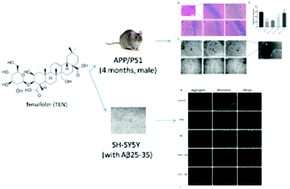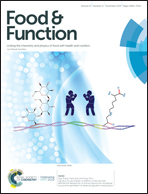Protective effects of tenuifolin isolated from Polygala tenuifolia Willd roots on neuronal apoptosis and learning and memory deficits in mice with Alzheimer's disease
Abstract
The roots of Polygala tenuifolia Willd have a long history of being used as a traditional Chinese medicine for the treatment of insomnia, forgetfulness, sorrow and depression. Tenuifolin (TEN) has been isolated from Polygala tenuifolia Willd roots, and this study was carried out to investigate the potential beneficial effects of TEN on neuronal apoptosis and memory deficits in a mouse model of Alzheimer's disease (AD). TEN treatment reversed spatial learning and memory deficits, as well as neuronal apoptosis in hippocampal areas, in APP/PS1 transgenic AD mice. TEN treatment protected against Aβ25–35-induced apoptosis, loss of mitochondria-membrane potential, and activation of caspases-3 and -9 in SH-SY5Y cells. TEN has potential benefit in treating learning and memory deficits in APP/PS1 transgenic AD mice, and its effects may be associated with reversing AD pathology-induced neuronal apoptosis. These insights pave the way for further analysis of the potential of TEN as an AD therapeutic agent.



 Please wait while we load your content...
Please wait while we load your content...